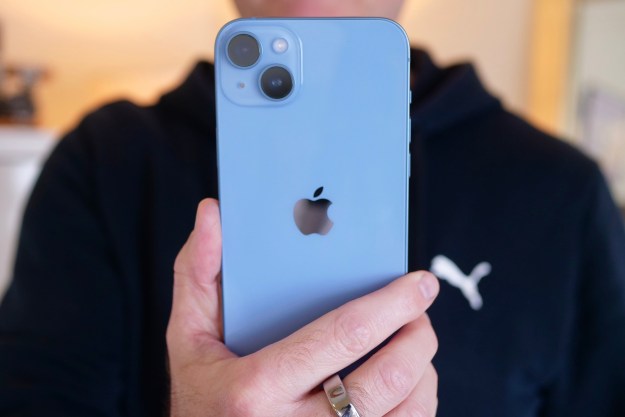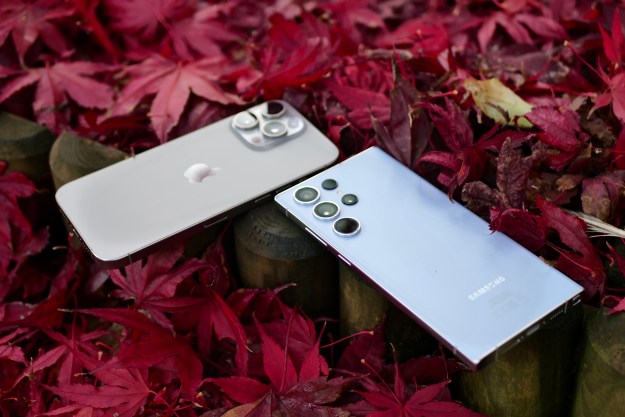
It’s an error that began cropping up for some iPhone 6 users as early as 2014, and once you see it, your phone is bricked. It’s essentially caused by third-party repair technicians, but it’s not exactly their fault. Error 53 kicks in when iOS 9 recognizes that the iPhone 6 and iPhone 6 Plus have been repaired by a non-Apple technician, but in some cases, users didn’t even take their broken device to a technician, yet still reported the same error after updating their phone to iOS 9.
Updated on 02/18/2016 by Robert Nazarian: Added in Apple’s apology and information regarding an iOS patch update to fix Error 53.
Apple issued a patched version of iOS 9.2.1 for users to download via iTunes only. This patch will restore iPhones and iPads that are bricked or disabled from Error 53. Just plug your device to iTunes, even if it’s bricked, to get the update. It’s available for iPhone 6, 6S, 6 Plus, 6S Plus, iPad mini 3, iPad mini 4, iPad Air 2, and iPad Pro users. Click here for Apple’s support page regarding the update.
Those of you who update over-the-air through iCloud don’t need to worry about installing this update since your device shouldn’t be affected.
Apple also issued an apology, which was shared by Tech Crunch:
“Some customers’ devices are showing ‘Connect to iTunes’ after attempting an iOS update or a restore from iTunes on a Mac or PC. This reports as an Error 53 in iTunes and appears when a device fails a security test. This test was designed to check whether Touch ID works properly before the device leaves the factory.
Today, Apple released a software update that allows customers who have encountered this error message to successfully restore their device using iTunes on a Mac or PC.
We apologize for any inconvenience, this was designed to be a factory test and was not intended to affect customers. Customers who paid for an out-of-warranty replacement of their device based on this issue should contact AppleCare about a reimbursement.”
It’s important to note that even though your device will be restored after applying this patch, unfortunately Touch ID will continue to be unusable. This is for security reasons. Your fingerprints act as a private key because they are stored on a secure enclave that’s not accessible by the rest of the phone or even by Apple. The reason for disabling Touch ID is so that no other party will be able to access your iPhone or iPad by replacing the Touch ID sensor or its cable. There is no way to discern between a criminal and an unauthorized repair shop, even though the repair shop isn’t trying to harm you.
Users who want to get Touch ID back will need to have it replaced by Apple or an authorized repair center. That could be costly, so users who have a damaged home button can still opt for an unauthorized service center to replace it for a lower charge, if Touch ID is no longer desired.
The whole issue appears to have been caused by damage to the Touch ID-enabled home button. Some users haven’t had issues after damaging their phone and have continued to use them, and the same is true for those who sent their devices for repair to a non-Apple technician. The problem arises when users with damaged home buttons update to iOS 9, where users say they simply get an Error 53 message, and are left with a valueless device.
A law firm in Seattle has filed a class-action lawsuit against Apple in the U.S. District Court for the Northern District of California over the Error 53 issue that’s affecting many iOS users. The case still has to be certified as a class action by the court.
The filing claims that Apple took no steps to warn its customers that their iPhone 6, 6S, or Plus variants would be bricked after updating to a newer iOS version, just because they repaired their device with a non-authorized Apple technician prior to the update. The report also says some users haven’t even had repairs done to their devices, but the error code still “disabled” their iPhone, and as of November 2015 more than “62 million units of the affected models were in use in the United States.”
A simple Google search of the error will lead you to numerous posts and threads in Apple’s Support Communities with users complaining about the issue and how their device is officially dead. Customers are reporting that they haven’t gotten any help from Apple Support, and are usually turned down for warranty claims as the phones are visibly broken.
While it may sound like Apple is hell bent on only allowing Apple-approved technicians to repair their devices, it’s actually a little more complicated than that.
A spokeswoman for Apple told Digital Trends the reason behind Error 53 is related to security concerns.
“We take customer security very seriously and Error 53 is the result of security checks designed to protect our customers,” the spokeswoman said in an email statement. “iOS checks that the Touch ID sensor in your iPhone or iPad correctly matches your device’s other components. If iOS finds a mismatch, the check fails and Touch ID, including for Apple Pay use, is disabled. This security measure is necessary to protect your device and prevent a fraudulent Touch ID sensor from being used.”
Apple’s advice if you’ve run into this issue? Contact Apple Support.
While users could find authorized-Apple technicians to repair their devices, that’s usually not the most affordable option for people who have already dropped more than $500 on an iPhone. And sometimes it’s not about the money — the Guardian described the experience of a freelance photographer who didn’t have access to an authorized Apple technician, and his only option was a third-party repairman.
Until Apple offers a fix from Error 53, we recommend not updating to iOS 9 if you have had your iPhone 6 or 6 Plus repaired by a non-Apple technician, or even if the home button has suffered any damage.
Previous updates:
Updated on 02/12/2016 by Julian Chokkattu: Added news of a class-action lawsuit being filed in California over Error 53.
Editors' Recommendations
- Nomad’s new iPhone case and Apple Watch band may be its coolest yet
- Here’s how Apple could change your iPhone forever
- This one thing could make iOS 18 the best iPhone update in years
- Everything Apple says is wrong about the DOJ’s iPhone lawsuit
- 10 reasons you should buy an iPhone in 2024


